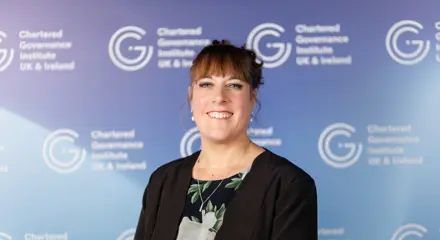

Blog
Comment: "Governance gatherings are pivotal to professional growth"
With governance under pressure from rapid change and rising risk, the CGI Scotland Conference 2025 offers a space for professionals to connect, collaborate and stay ahead. In this comment piece, Gary Gray FCG explores how convening across sectors strengthens resilience and why community is now central to governance excellence.

Blog
What the Captain Tom case teaches us about governance and trust
The Charity Commission’s inquiry into the Captain Tom Foundation exposed repeated misconduct and mismanagement by Hannah and Colin Ingram‑Moore. Its report cited failures in conflict management, oversight and intellectual property arrangements, offering stark lessons for boards on independence and transparency.

Blog
Comment: "Ethical leadership needs company secretaries who do more than manage process"
Peter Ho FCG urges company secretaries to step up as strategic partners in ethical leadership, helping boards move beyond process to build integrity, challenge blind spots, and prepare for complex governance challenges.

Blog
From the CEO: It is an immense privilege to begin my role as your new Chief Executive
I join at a moment of both challenge and opportunity for our profession. That is why our membership survey is so important. It gives us the evidence to shape strategy, measure impact, and decide what we should start, stop or strengthen.

Blog
Comment: "My role in advancing Agentic AI initiatives at Citi"
In this comment piece, Harmeen Birk, former AI Strategy Lead at Citi, explores the transformative impact of agentic AI in financial services. With Citi now piloting the technology across 5,000 employees, Birk reflects on how autonomous systems are reshaping operational capacity, governance, and risk frameworks.


Blog
Comment: "Black Excellence in Governance changes everything"
In this powerful reflection, Damilare Ojo shares the vision behind the inaugural Black Excellence in Governance Awards UK—a landmark initiative celebrating the achievements of Black professionals whose leadership is reshaping boardrooms across the country

Blog
Workplace relationships: time to review your policies?
Recent high-profile resignations have reignited debate on workplace relationships and governance. With new UK legal duties on harassment prevention and growing scrutiny of conflicts of interest, now is the time to review policies, disclosure processes and cultural safeguards

Blog
Likes can fall fast. Is your social media governance ready?
Social media offers organisations powerful opportunities for engagement, but also introduces unique risks that require robust governance. This article explores how governance professionals can add value by embedding clear structures, rules, and oversight into digital channels.


